By THEA REBECCA DC. FLORES
EVEN BEFORE bracing a peek into her designer creations, the late dressmaker Salvacion Lim Higgins has already sketched a fashion-forward outlook into this exclusive dressmaking called “haute couture.”
Haute couture, French for ‘high sewing,’ is the high-end fashion luxury for custom-fitted dressmaking. Intricate embellishments and embroidery are ornate in this prestigious craftsmanship.
Couturier Salvacion Lim, often referred to as ‘Slim,’ revolutionized the Philippine fashion industry during the ‘golden age of haute couture,’ starting mid-1940s.
This ultimately established her as the “Queen Mother of Modern Terno.”
The terno is part of the broad selection of filipinianas and is most often recognizable by its butterfly sleeves. It is also mistakenly known as the Maria Clara gown, however, they are not the same.
Maria Clara gown has originated from the garment traje de mestiza (roughly translated as mestiza dress), which, eventually became a terno.
This awarded National Artist of the Philippines this 2022 was featured in the webinar titled “After the War: Fashioning the Philippines” last August 27. It is a part of the event ‘Liberation War & Hope’ organized by Ayala Museum and The Filipinas Heritage Library, which commemorates the 75th anniversary marking the end of World War II.
The exhibit and the webinar are being supported by a grant from the U.S. Embassy in the Philippines. This event is also in a media partnership with Manila Bulletin.
The resource speaker is Slim’s son, Mark Lewis Higgins: a fashion designer, visual artist, and director of Slim’s Fashion and Art School.
The War
Slim came to Manila to study Fine Arts at the University of Santo Tomas under National Artist for Visual Arts Carlos “Botong” Francisco.

Unfortunately, while she was studying, the war broke out and the Japanese occupied the Philippines, turning the University into a concentration camp.
During this time, the country struggled for food, shelter, and clothing. Textiles were rationed, and nylon was used in creating parachutes.

The extent of WWII to the Philippines was so intense that when it ended, Manila was the second most devastated city after Warsaw.
The ‘Golden Age of Haute Couture’ and Slim’s early years as an artist
Two years after the war, the house of Dior in Paris opened in 1946, showing its first collection in 1947. Completely revolutionizing the game, fashion historians would refer 1947-1957 as the ‘Golden Age of Haute Couture.’
This was when the Philippines also followed the fashion trends in Europe, especially Slim who was very much influenced by Dior’s silhouettes.
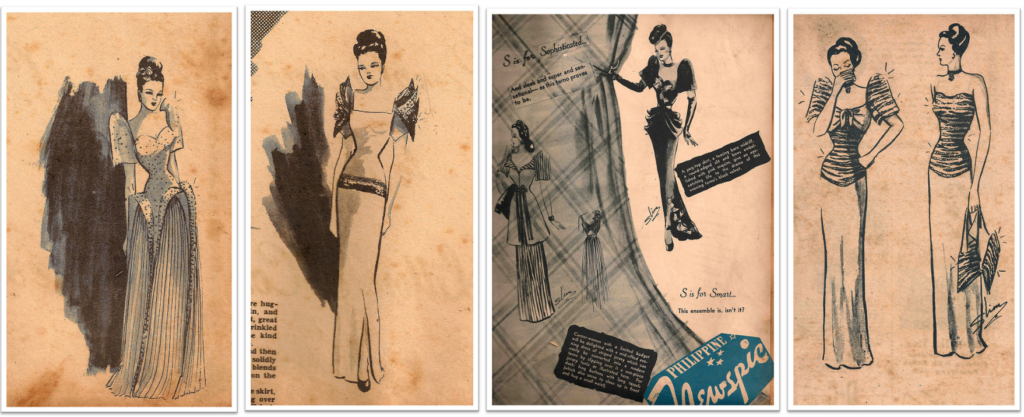
Her sketches showed up in the Sunday Times Magazine, and the signature of S.Lim would later turn to “Slim” hence the nickname.
“She was fearless [and] very experimental. She would take the most unlikely fabrics and put them together [to] experiment all the time,” her son Higgins said.
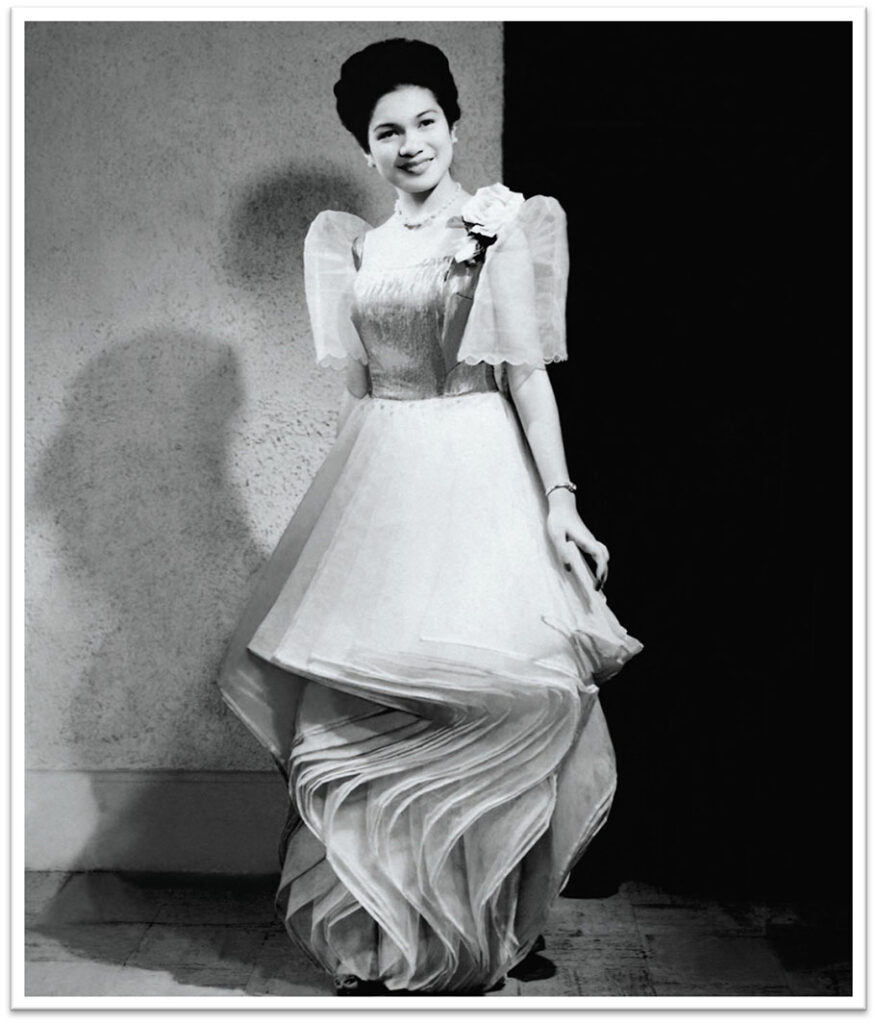
Her love for creating asymmetrical designs and silhouettes, her experimentation with color, and her expert craftsmanship exude through her works. The avant-garde approach towards high fashion dressmaking drew friends and loyal customers to the atelier.
Slim, along with her older sister Purification and their staff of about 22 people would balance a lot of couture dresses at the same time as each dress required hours and hours of labor.




Photo courtesy of Mark Higgins.
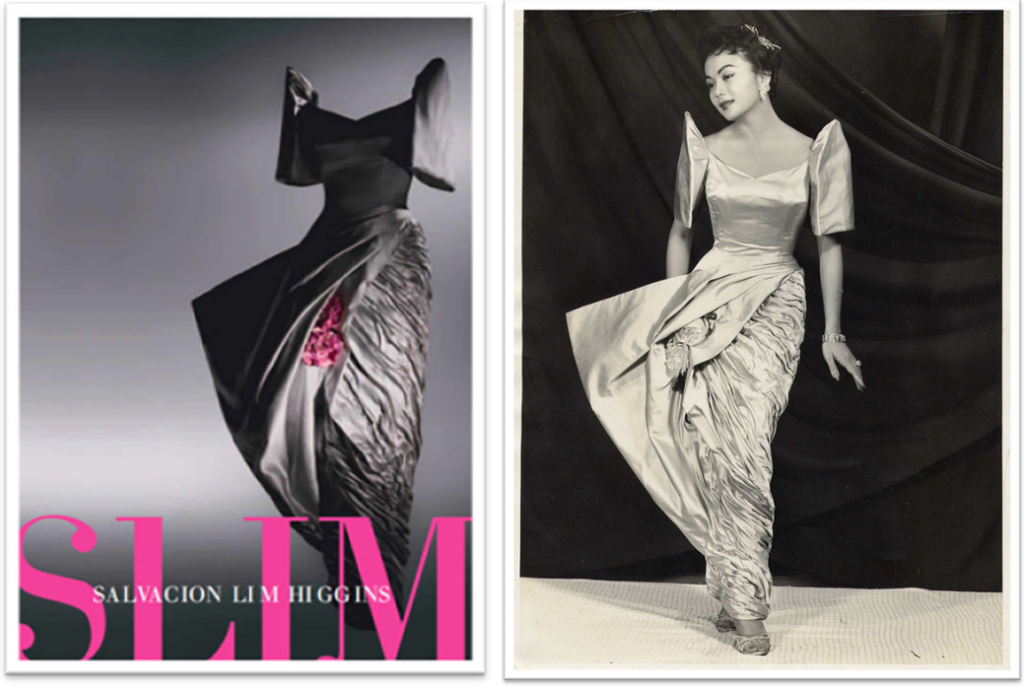
Photo courtesy of Mark Higgins.
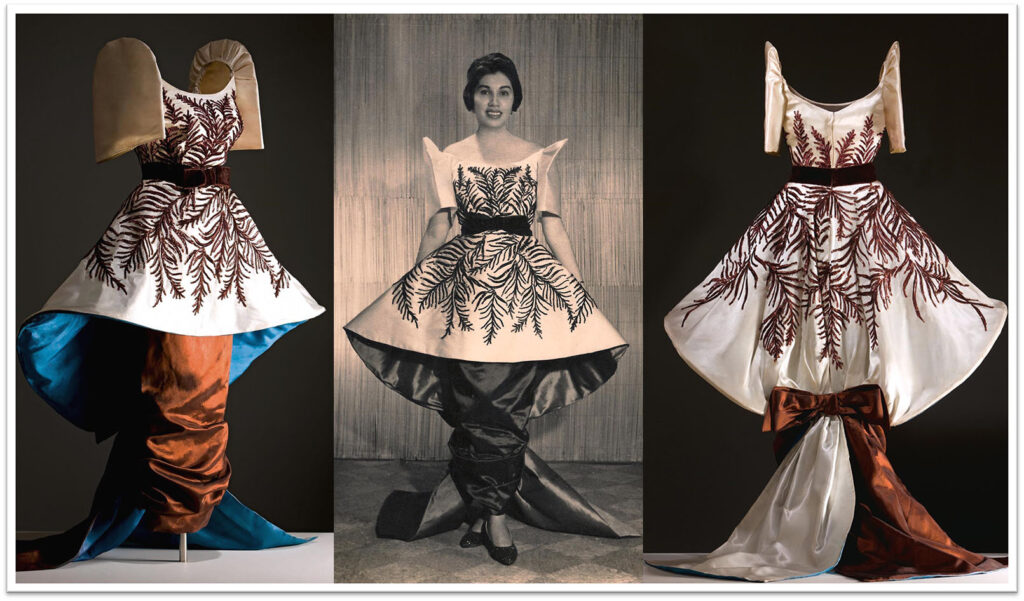
The first ever Miss Universe in 1952, Armi Kuusela (Miss Finland) was also one of Slim’s loyal customers. Whenever she was in Manila, she would order ternos and gowns from Slim’s atelier.

However, it did not stop at modern ternos. Bridal ternos were also well-loved by the public. Its handmade and elaborate embellishments showed impeccable artistry. Higgins mentioned the shop would receive about several orders of wedding dresses a month (on top of the other dresses).

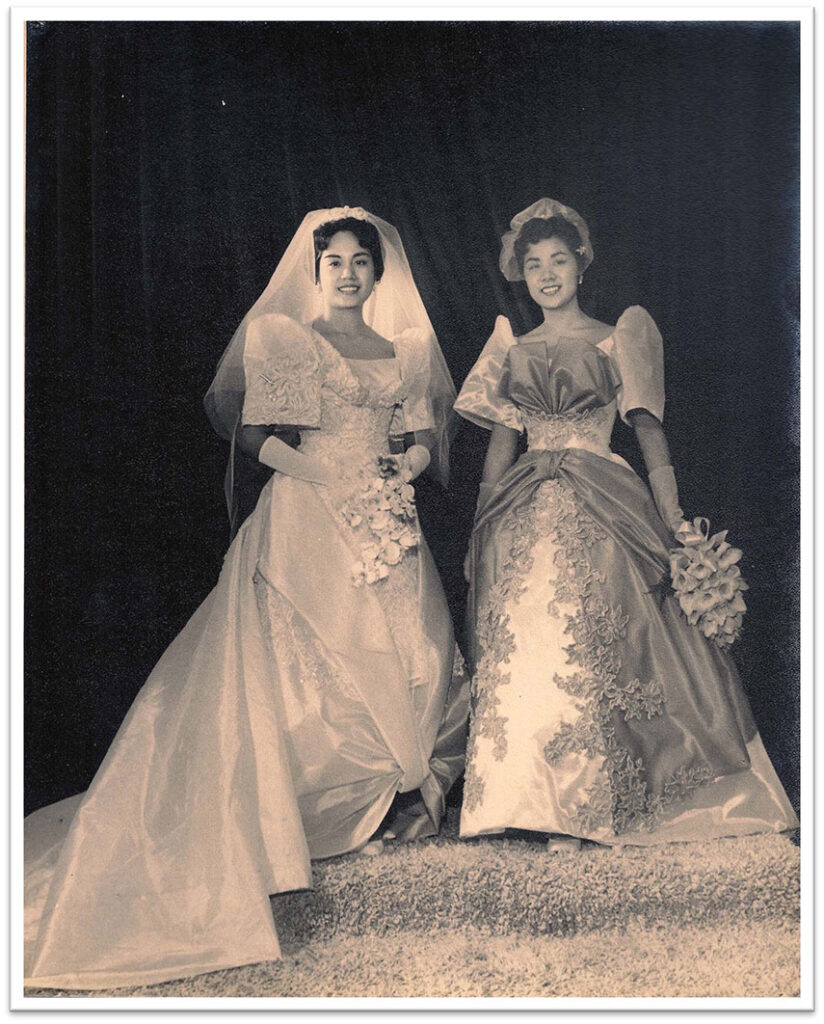
Photo courtesy of Mark Higgins.
The webinar only covered the first decade of Slim’s career.
On her evolution as an artist, Higgins said, “She moved with the times. She was never trapped in her generation, [and] she was always looking for the next modern thing.”
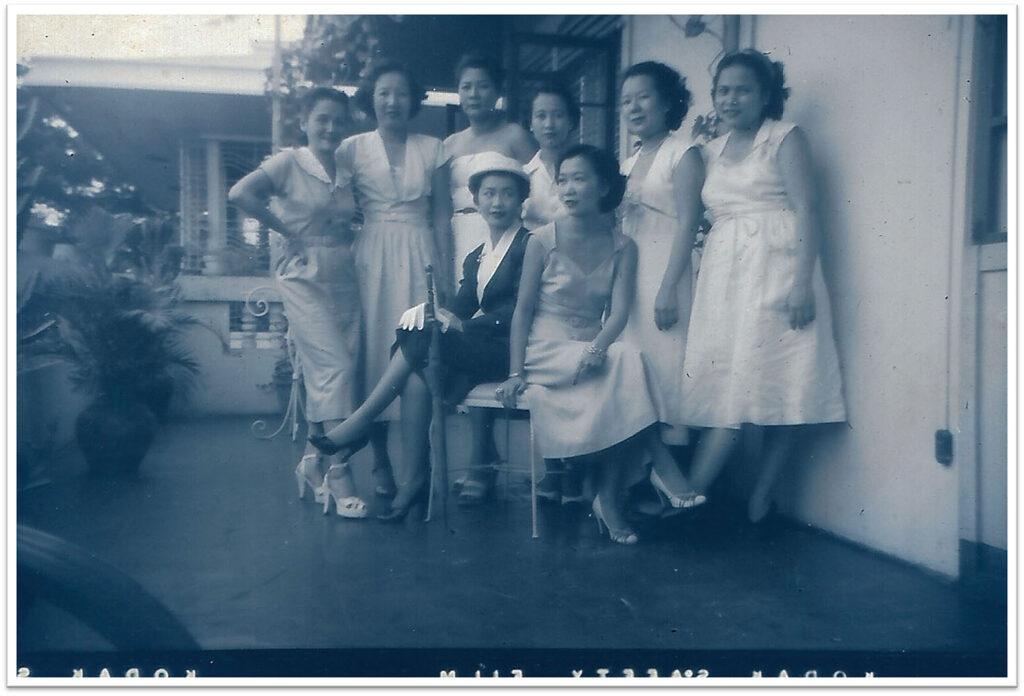
Higgins shared about the influence of WWII on his mother’s works and how it became a form of liberation.
“I think she was a very unique thinker, to begin with. […] The way you liberate yourself from a traumatic or unpleasant situation is to defy it by moving forward in a positive way,” Higgins said.
He said people could look at these extravagant clothes and wonder how people could wear those after the war when there was so much ruin.
“It’s also a way of moving forward. It’s a form of defiance […] Enough sadness, enough destruction, enough death. I’m creating, filling this void of beautiful things [in] my own way,” he said.
The National Artist for fashion design is garnering a buzz for all good reasons. The recent launch of Vogue Philippines’ first issue last August 29 features Slim.
In the exhibition starting from today, September 5 until 17, her trailblazing works can be viewed at SM AURA Premier’s Upper Ground Level Atrium.
Some of the designs can also be found at the Archives of the Victoria and Albert Museum in London.
Slim’s Fashion and Art School, the earliest fashion institution in the country is accepting online enrollees from all over the world. Books in Slim’s name are published to immortalize her works.
To conserve the legacy of his mother, Higgins has also donated materials to the Filipinas Heritage Library. F



